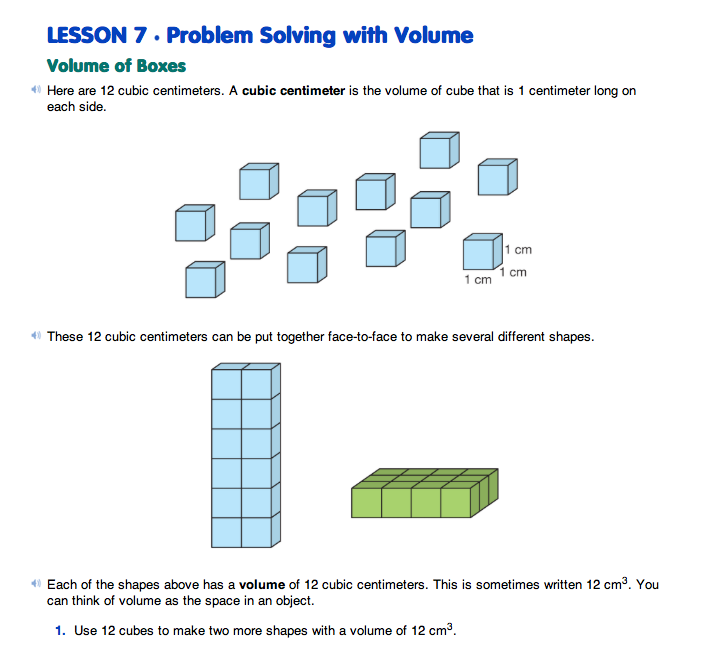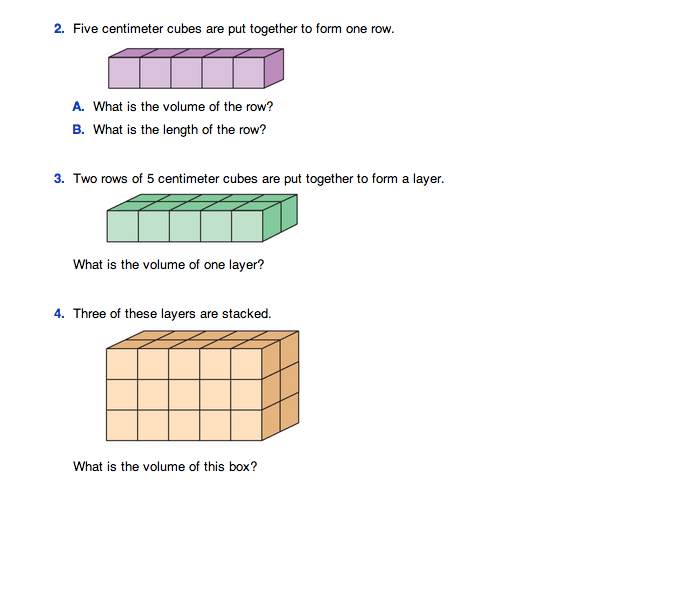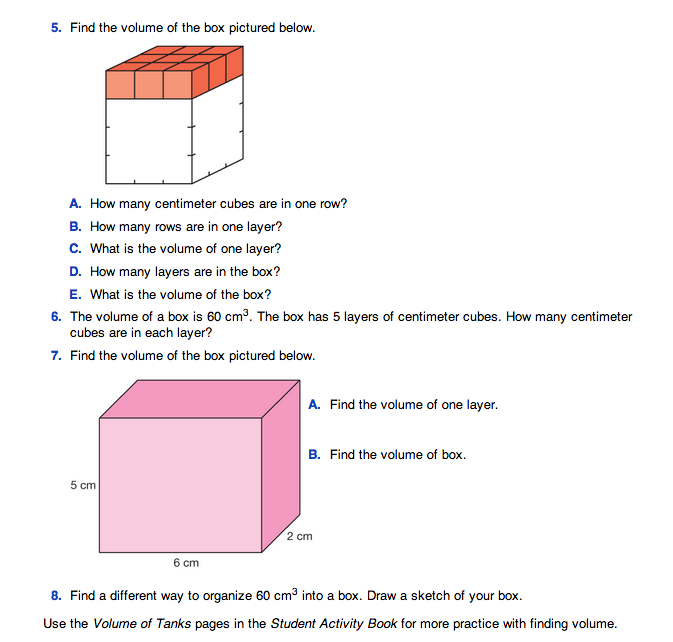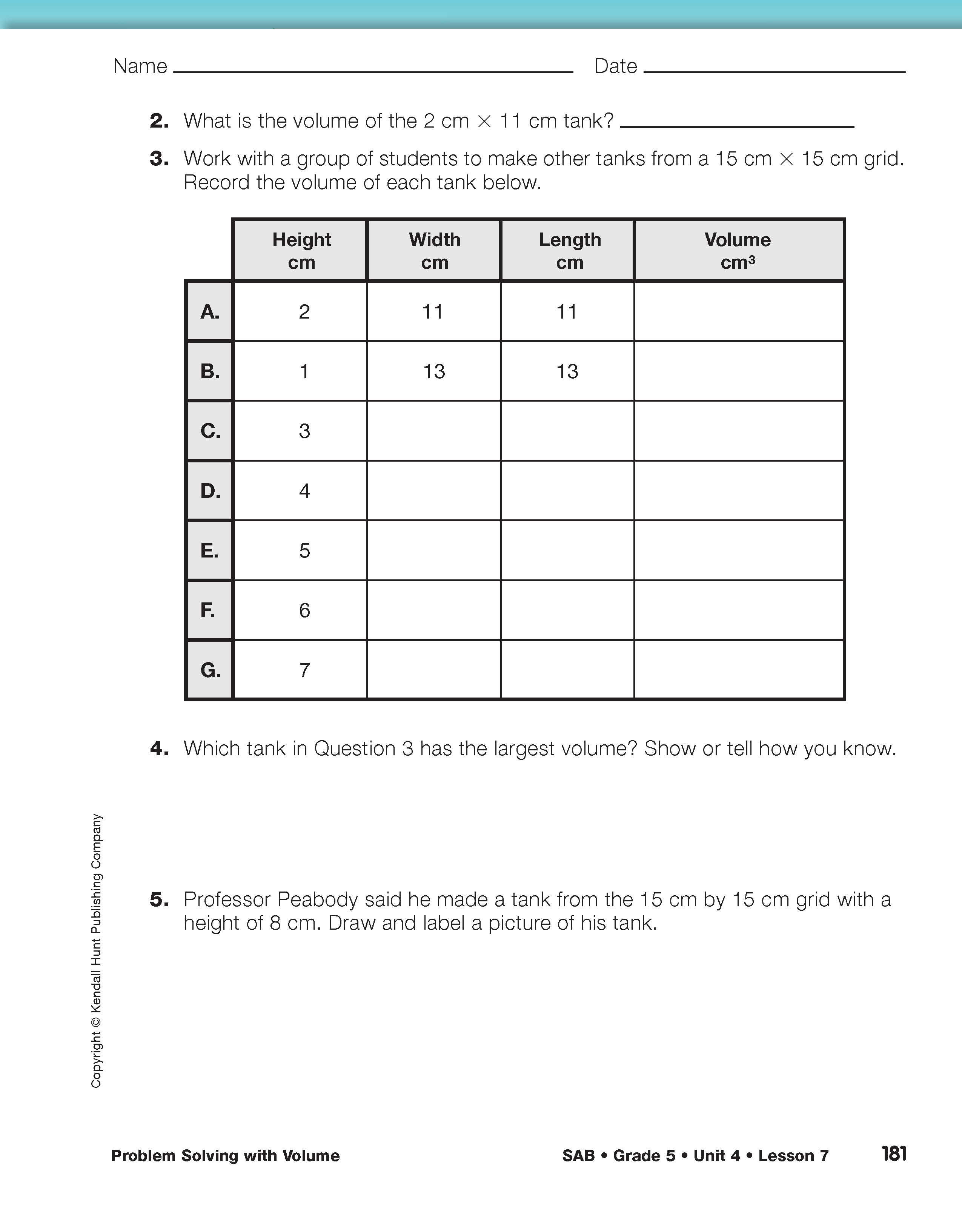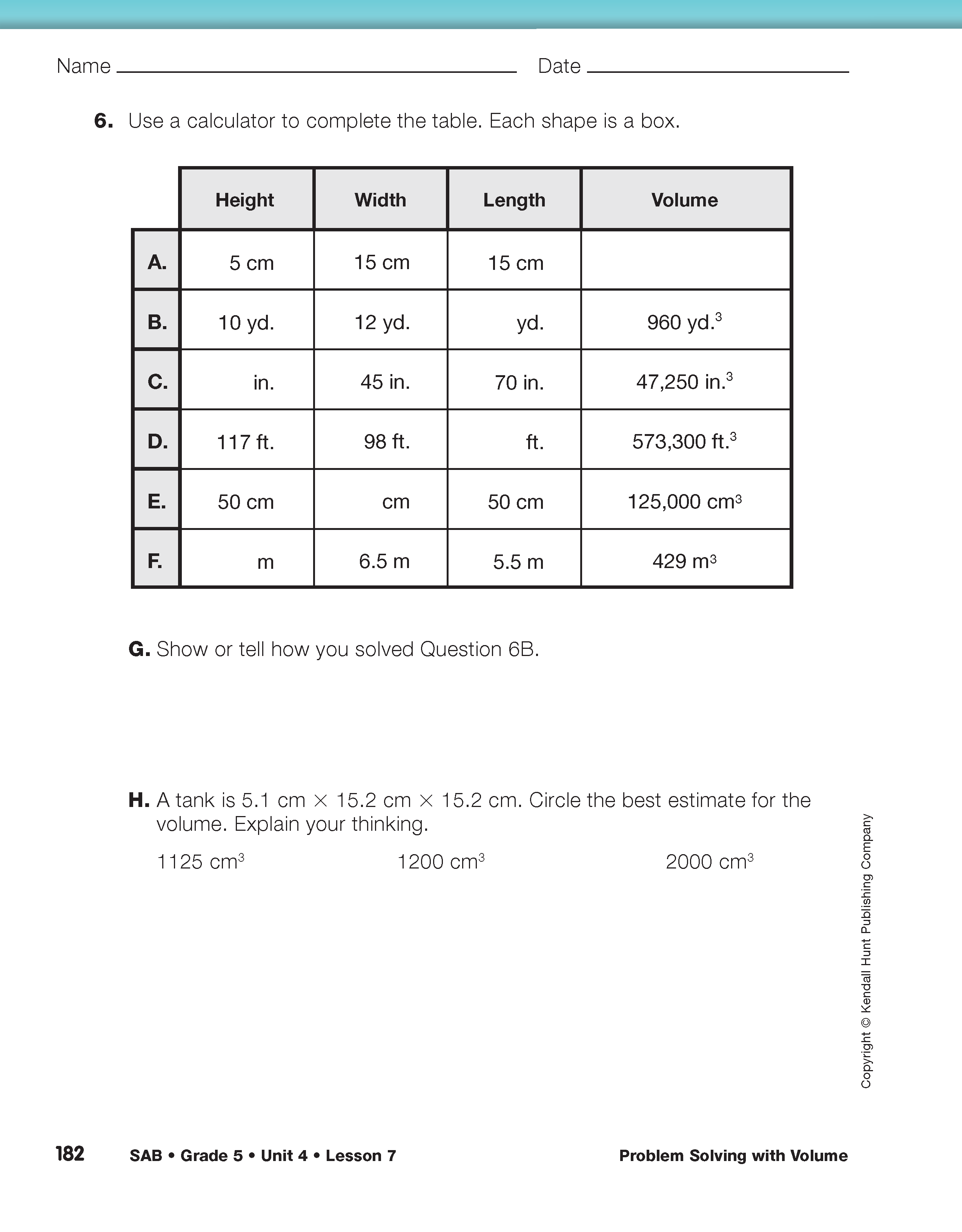Problem Solving with Volume
Est. Class Sessions: 2–3Developing the Lesson
Part 1. Use Strategies to Find Volume
Find Volume of Boxes. Begin the lesson by directing students to the Problem Solving with Volume pages in the Student Guide. Ask students to read the definitions of a cubic centimeter and volume on the first page. Students learn that volume is the amount of space in an object and that it is measured in cubic units. A cubic centimeter is the volume of a cube that is one centimeter long on each side. Cubic centimeter can also be written as cm3.
Distribute a handful of centimeter connecting cubes to each student. Each student will need at least 24 cubes. In Question 1, students use the cubes to build two shapes with volumes of 12 cm3.
When students have each made two shapes, ask:
Assign Questions 2–8 to student pairs. Students answer questions about the volume of rows, layers, and boxes made of centimeter connecting cubes. Have centimeter connecting cubes available.
Upon completion, display Questions 5–7 of the Problem Solving with Volume pages.
Use prompts such as the following to discuss the strategies used to solve the volume problems:
Find Volume of Tanks. Tanks are slightly different from boxes in that they do not have a top. Display and direct students to the first Volume of Tanks page in the Student Activity Book. Use a copy of the Make a Tank Master and the step-by-step instructions in Question 1 to demonstrate how to construct a tank as students follow along. In Question 2, students find the volume of a 2 cm × 11 cm × 11 cm tank model.
Next, organize students into groups of four. Distribute 7 copies of the Make a Tank Master to each group. Assign Questions 3–5. Students will work with their groups to make other tanks from a 15 cm × 15 cm grid and find their volumes. Students may want to use tape on some of the taller tanks. Use a display of the table in Question 3 to discuss students' responses to Questions 4–5.
Ask:
In Question 6, students will use multiplication and division strategies to find the missing values (height, width, length, or volume) in a table. Encourage students to use a calculator so that the goal of solving multistep problems is emphasized rather than the computation.
Upon completion, choose some of the problems in Question 6 to discuss. Have students explain how they found the missing values. If students know the length, width, and height, they can multiply these dimensions' values to determine the volume. Remind students of the inverse property between multiplication and division. If they know the volume and 2 of the 3 dimensions' values (height, width, length) they can first multiply the 2 values together. Next, they can divide the volume by this product to find the missing dimension. See Figure 1 for a sample solution to Question 6D. For some questions, students will label their answers with units of length (cm, yd., in., ft., m) but when finding volume, they will use cubic units.
Ask:
Ask students to look at the table in Question 6.
Ask:
Ask students to work with a partner on the problems in Question 6.
As students are working circulate and ask:
Gather students to share their strategies to Question 6B and discuss the problem described in Question 6H.
Ask:
Assign the Homework section of the Student Guide to provide practice using multiplication and division strategies to find the volume of boxes.












